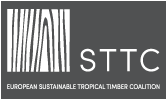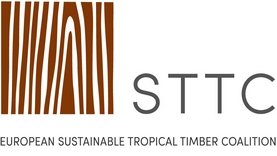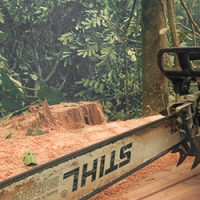In this spotlight: Christophe Janssen, Interholco Vice President Production and Sales

Photo: Interholco
In this spotlight Christophe Janssen, Interholco Vice President Production and Sales describes its operations and objectives as a Fair&Precious partner.
STTC/Fair &Precious: How would you describe Interholco; what you do and what you stand for?
Christophe Janssen (CJ): More than 400 customers in 50 countries know Interholco as a leading providers of some of the finest hardwood from the Congo Basin. Our wood is made in Africa, where value is added. This benefits a community of 16,000 people living in one of the most landlocked areas of the Republic of Congo (Congo Brazzaville – RoC). Our teams also process wood to the most demanding environment, social and governance standards, those of FSC certification, helping drive development. Of Interholco’s 1,400 employees across Africa, the Middle East and Europe, more than 900 are in the Congo, where they’re paid a living – not just a minimum – wage. Company-run facilities in the RoC also provide vital services. In 2021 alone, our medical centre saw 13,962 patients – with indigenous peoples treated free. Our library, the largest in the Sangha department of north Congo, boasts over 9,000 books and Interholco IT and English courses are free to all.
STTC/F&P: Why did Interholco become a F&P partner?
CJ: We were involved with the F&P, from inception to launch. Its objectives are in line with our vision to provide ‘Sustainable Wood, Made in Africa’, not just a simple product derived from forests, but a forest of solutions. Our mission is to help combat climate change and substitute use of energy-intensive materials, to give value to natural forests, promote social equity and co-create change with renewable, recyclable, sustainable, traceable and carbon positive material.
STTC/F&P: Can tropical timber retain its share of the European market
CJ: Yes. After years of negative communication about tropical wood, timber from sustainably managed forests is becoming more desirable, thanks to its exceptional natural characteristics, environmental performance and socio-economic benefits. Third party organizations verify its environmental credentials on site and, among professionals, the image of tropical wood has improved significantly. But there is still a long way to go. We must now make consumers aware that using certified African wood is positive for people, climate and planet. Businesses lack the time and financial resources to promote this virtuous product, which is why development of F&P as a communications tool is vital. It is key to promote good species of wood for the right use and to replace non-virtuous materials whenever possible.
STTC/F&P: So can the tropical timber sector rebuild and grow its presence in Europe?
CJ: Yes, but to move forward we must join forces and gain support. Political back-up is crucial. Unfortunately, there is still a lot of misinformation about using wood generally. We must make the wealth of benefits it yields better known and understood. Best practice can help people understand what we do and why our wood is good.
STTC/F&P: Do you see new applications opening for sustainable tropical timber and timber products?
CJ: Of course the building sector will have a big role to play in this. The industry needs to reduce its carbon footprint and wood is the only building material that is renewable, sequesters CO2 in production and stores it to end of life. Exterior uses are particularly appropriate for tropical hardwoods. They boast higher natural durability, making them ideal for applications such as decking, window frames and fencing without preservative treatment.
STTC/F&P: Do you see potential for growing uptake of lesser known tropical timber species?
CJ: This is important to reduce market pressure on traditional species. It will also add diversity and choice to the market. The challenge is that technical performance testing takes time and research is expensive. Also to make them a viable proposition, forest areas should have sufficient density of LKTS. There must be long-term availability, and sufficient volume to justify industrial transformation and promotion. End-users need both technical assurance and the back-up of marketing for a species.
STTC/F&P: What would be your sales pitch for sustainable tropical timber and wood products?
CJ: “Buy tropical wood from certified sustainably managed forests. No other material yields such benefits for people, climate and planet.” You can substitute energy intensive materials with wood from sustainably managed forests; sustainably produced tropical wood from Africa and other parts of the world allows long-term protection of forests and their flora and fauna, while supporting jobs and social welfare; natural regeneration after harvesting results in higher CO2 sequestration, African wood is relatively cheap given its technical characteristics, repairability and recyclability, so it is safe to use, fire-resistant, future-proof and healthy.
STTC/F&P: Are you optimistic for the future of the sustainable tropical timber sector?
CJ: Of course! If we consider all mentioned arguments it can’t be else.





